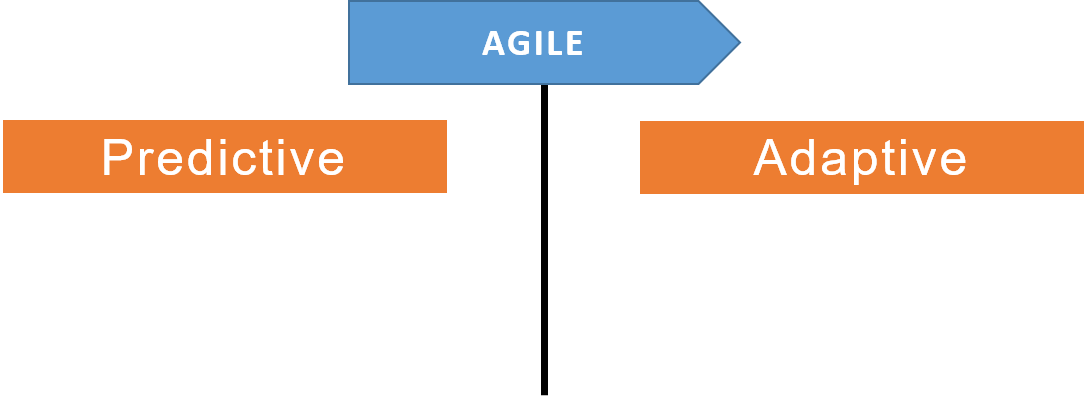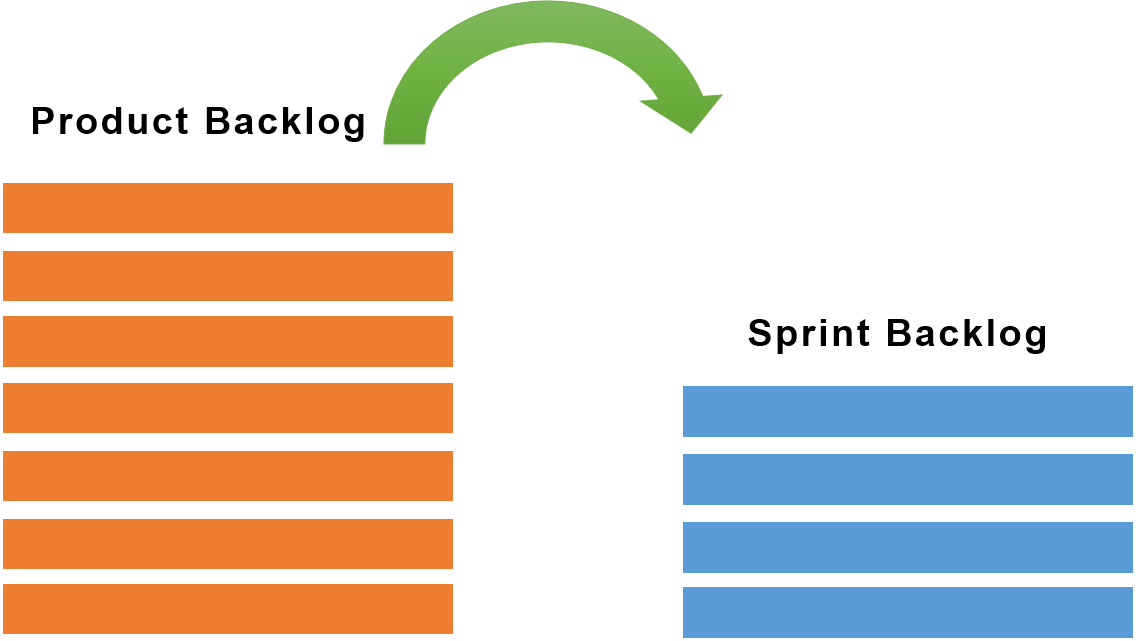The IT industry is swiftly embracing Agile methodology and this brings into focus the role of an Agile business analyst. Since the focus of using agile methodologies is to deliver value to customers, it ultimately requires the need for the entire team to jointly perform business analysis on a continual basis. What is the role of an Agile business analyst? Is the role of a business analyst in Agile projects different than that in waterfall projects? We will examine the role in detail.
In this article, we are going to discuss the need and the context of Agile business analysts and their roles in an agile environment. To understand the role better, let’s understand the way the software development happens in an Agile environment.
What is Agile Methodology?
Agile methodology is the practice of continual iteration of software development and testing. Moreover, the agile methodology approaches are laid down within the values and principles as mentioned in the Agile Manifesto.
The purpose of agile methodologies is to deliver the right products and deliver small parts of the project frequently as it enables the customers to give feedback for different phases of the project and ask for project changes if needed.
History of Agile Movement
How did Agile came into picture? By 1970s, software experts were convinced that waterfall way of software development was not suitable for most of the bespoke software development projects, because of various reasons e.g. changing requirements, lack of consistent customer collaboration.
Many methodologies popped up thereafter – right from Prototyping, Spiral, XP, pair programming, DSDM etc. Agile can be thought of as a culmination of many such attempts. It took concrete shape when 17 such experts came together and agreed on a common Agile framework in 2001. The key principles behind Agile manifesto has been:
- Early and continuous delivery of working software to encourage customer collaboration unlike other methodologies wherein working software is only available in the end for customer UAT.
- Finding a methodology to respond to the reality of changing requirements, rather than trying to stabilize the requirements through various means e.g. Change request process

Both these principles indicate that the Agile approach is adaptive rather predictive, whether it is planning or design or development. People don’t follow a plan, made by project managers, but continuously adapt based on the customer feedbacks and changing scenarios.
We guess, what we described above, is well-known and Agile Methodologies have proven their superiority already. Let’s examine the context of a business analyst in Agile Projects.
Context of Business Analysts
What does a business analyst do in software projects:
- Work as a primary interface between customer and the tech team
- The primary role is collecting, analyzing & modeling customer requirements
- It’s about translating the business requirements into set of technical requirements, so that technical teams can design and code the system better
- Validate the software before handing over to the customer
- Managing the requirements (changing requirements, prioritization etc.)
Role of business analyst, as a specialist has been gaining critical importance for two reasons:
- Incorrect/insufficient understanding of customer requirements has been one of the top reasons for failed projects and Business analysts are entrusted with the responsibility of getting the requirements right.
- Technical teams may write better programs if they can understand – “Why something is required”? Business analysts achieve this using modeling and close collaboration with the technical team.
The above become even more relevant with the increasing size and complexity of the projects. We conducted a webinar some time back on the roles and responsibilities of a business analyst.
The roles and responsibilities of a business analyst may differ for different positions in an organization. For instance, the roles of BA in the software development cycle will be different from the roles of a BA as part of the Scrum team. Let’s now examine the role and need of a BA in Agile methodologies.
Role of Agile Business Analyst
SCRUM is probably the most used and followed Agile methodology and does not have a defined role as a Business Analyst. SCRUM did not define the role of a BA, probably because the role of a business analyst was not very prominent then. Scrum has a role of a product owner. A product owner is responsible for eliciting, analyzing, modeling, and managing the requirements.
An Agile business analyst’s role is very similar to a product owner’s role. Let’s try and understand the role of an agile business analyst for the following:
Business Analyst Role In Software Development Cycle
The role of a business analyst in the software development process/cycle may differ for the different phases. Here is everything you need to know about the role of a business analyst in different phases of a software development process.
Requirement Gathering Phase
The role of a business analyst in the requirement gathering phase is as follows:
- A BA gathers all the high-level requirements and breaks them down to fit in time-boxed delivery cycles.
- Refining the next few weeks’ worth of requirements into details for the developers to start.
- Lower priority requirements will remain on the list as options until they are the next priority.
Documentation
The role of a business analyst in agile is to create the following documents during the documentation phase.
- Epics, user stories, acceptance criteria
- Backlog features/epics/user stories and use cases, Backlogs.
Note- The epics, user stories, and acceptance criteria are followed while developing the project.
Requirement Confirmation & Change Request
A business analyst in agile performs the following role for the requirement confirmation and change request phase.
- Change requests are anticipated and considered anytime during the development cycle. On every iteration, the feedback is taken by the business analysts during every time-boxed delivery cycle so that further changes can be accommodated.
Iteration
In the iteration phase, the business analyst performs the following role:
- A business analyst will regularly be connected with the development team in every iteration cycle.
- A BA will communicate/demo developed functionality in front of a client to obtain their feedback
Progress Update & Delivery Cycle
The role of a BA in progress update and the delivery cycle is as follows:
- Visibility is high as BA will demo functionality in regular iteration intervals.
- After client approval, projects get delivered in small functional slices in every iteration.
Improvement Aspect
- A BA is responsible for ongoing feedback at the end of each iteration.
- The feedback is leveraged in the next iteration.
Business Analyst Role as a Product Owner
The role of a business analyst as a product owner becomes a blend of both domains. Here are some of the roles of a BA as a product owner.
- The BA is responsible to be in charge of everything related to the business, product, and documentation.
- The BA constantly acts as a pilot for the agile team and the stakeholders.
- The BA is responsible for interacting with the customers, understanding the requirements, and then documenting them.
- The BA creates the user stories followed by prioritization.
- The BA is also responsible for interacting with the entire agile team and educating them on where and how to start, among other information.
In a nutshell, a business analyst must have an in-depth knowledge of the product to ultimately lead to the successful development and delivery of the respective product.
Business Analyst Role as a Scrum Team Member
In SCRUM, the product backlog captures the requirements for the entire product/project. A set of requirements taken up to be completed in a particular SPRINT are listed in the sprint backlog. The product owner is responsible for managing the product & sprint backlog.

At the start of the project, product owners work with the customer and the stakeholders to come up with the broad-level requirements (EPICs, Themes, and user stories). Based on the prioritization of requirements, user stories are detailed out to create detailed user story cards. The team estimates and discusses the user stories (prioritized for this sprint) in the presence of the product owner. The product owner answers queries relating to the requirements, following the Agile methodology business analyst approach.
During the development, the Scrum team collaborates with the product owner to validate the solution (read individual screens or functionalities).The product owner also manages the backlogs and keeps them up-to-date. This includes – adding new user stories, deleting or modifying user stories based on the interactions with the customer.
To conclude, the product owner’s role aligns with the business analyst role in any other project, however, the nuisances of Agile methodologies make it challenging. Agile methodologies are not easy to implement in the true spirit as it requires not only a team’s alignment, it requires changes across the group or even organization.
You may also like our latest blog related to “Product Owner vs Business Analyst vs Scrum Master?”, click on the link, and explore other areas of Business Analyst.
Few Roles of a BA as a Scrum Team Member
- Understanding the requirements, preparing documentation, and grooming backlog.
- A BA is responsible to work on the backlog along with the other members of the team.
- For every roughly cited acceptance criteria, the BA is responsible for providing an in-depth explanation to the team.
- A BA is also responsible for providing information through wireframes and flow documents.
- A BA is a part of all customer meetings and sprint discussions.
Now that we have understood the role, how can a business analyst achieve it? By demonstrating certain skills and capabilities.
Skills required to be an Agile Business Analyst
The key skills required to become an agile business analyst are as follows:
Good Communication Skills
Good communication skills are a must for the Agile methodology business analyst as they are responsible for carrying out all communications with customers, teams, stakeholders, or other cross-functional teams. A BA should be able to convey messages clearly to everyone.
In-Depth Business Knowledge
It is crucial for a BA to hold an in-depth knowledge of the business, product, and vision. Moreover, along with having a thorough understanding of business knowledge, a business analyst should know how to recognize and prioritize the business values.
Flexibility and Adaptability
Another important skill that a business analyst should possess is flexibility and adaptability as agile teams function with cross-functional teams, it becomes necessary for a BA to adapt and be flexible to coordinate with different teams.
Knowledge of Tools and Techniques
One of the top skills to become an agile business analyst is to have a good knowledge of agile tools and techniques as they are helpful for backlog management, making estimates, and reporting for sprints, or it is also helpful for providing real-time collaboration.
How to Build a career as a BA?
The first and foremost step towards becoming a business analyst is to have an agile mindset. However, if you are an existing business analyst who is setting foot in the agile environment, then here are some points/tips that can consider building your career as an agile business analyst.
- Get an in-depth understanding of agile methodologies and how they function.
- You can follow in the steps of a product owner for the projects in the beginning in order to learn the roles of a product owner in an agile team.
- Focus on the skills necessary to become an agile business analyst such as your communication skills, and your ability to be flexible and adaptable to changing requirements and needs.
- Think with regard to user stories.
- Opt for training courses in agile business analysis. One such recommendation is the Agile Analysis Certification Course offered by Techcanvass and it is an IIBA approved course, making it even more trusted among agile business analyst aspirants.
Conclusion
An agile business analyst has a versatile skill set and is responsible for a number of roles in an agile team. If you are willing to become an agile business analyst, then you should pull up your socks and be ready to face some challenges as agile environments have changing scopes and requirements. You can begin your business analyst journey by enrolling for various training courses and ultimately applying for agile business analyst certifications.
About Techcanvass
Techcanvass offers IT certification courses for professionals. We are an IIBA endorsed education provider (EEP), iSQI ATP (for Certified Agile Business Analyst Training) as well as Agile Testing alliance partner for CP-SAT certification training in Selenium.
We have a Business analyst training course with domain training in-built into it. This training program offers you the opportunity to get certified with ECBA certification as well as have banking domain understanding.





